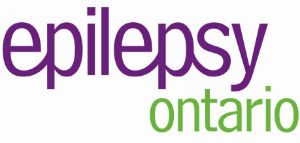By Deron Hamel
Four students received the OBCL Epilepsy Scholarship Award in 2015. Each has a different and unique story. Each has their own academic and career aspirations. But the tie that binds the four students has been their ability to overcome challenges they’ve faced with epilepsy.
 As 2015 comes to a close, Voices of Epilepsy would like to revisit the features we published in summer of the four award recipients – Anya-Belle Brown, Amanda Cook, Sarah Hysenaj and Andreia Real – as it’s these types of stories that inspire others.
As 2015 comes to a close, Voices of Epilepsy would like to revisit the features we published in summer of the four award recipients – Anya-Belle Brown, Amanda Cook, Sarah Hysenaj and Andreia Real – as it’s these types of stories that inspire others.
Anya-Belle Brown
Anya-Belle is studying journalism at Sheridan College. She says the road getting to where she is today has been difficult at times, but support from those around her has been a game-changer.
Anya-Belle was in her mid-teens when she was diagnosed with ring chromosome 20 syndrome, which is caused by the arms of the normally straight 20th chromosome to curl and form into a ring shape. The condition often produces seizures.
While Anya-Belle continues to experience about six seizures per day, understanding her condition, coupled with the support she receives from family, friends and some of her teachers, has made all the difference, she says.
“They encourage me every day to do well and to put my best foot forward; they’re my champions, they cheer me on during every race, and they seek out the best possible resources for me to succeed,” Anya-Belle says. “They always expect the best from me … I don’t know where I would be without their never-ending support.”
Amanda Cook
Amanda, who is now enrolled in the interior design technology program at George Brown College, can also attest to the value the support of others brings to people with epilepsy.
Before her diagnosis, Amanda says, her teachers, friends and family members didn’t understand what she was going through. Even she didn’t fully understand it, she says. Having a formal diagnosis encouraged Amanda to learn more about her condition and seek support to help her live with her seizures.
With the help of support groups, friends, family and school counsellors, Amanda says her confidence has dramatically increased. This change has come at a crucial time, as she is beginning to chart the course of her future.
“Before I was diagnosed with epilepsy, my hope for my future was bleak; I always thought I would either be in an accident while I was unaware of my surroundings, or would never do well enough in school to be accepted into or graduate from any college,” Amanda says.
Sarah Hysenaj
Sarah, who is now attending Ryerson University’s photography studies program, was diagnosed with epilepsy when she was 11.
One day after an appointment with her neurologist, Sarah was with her mother and they were passing the CN Tower, which was lit up red in honour of Remembrance Day. She recalls wondering if there was a day to mark epilepsy awareness. This was before March 26 was designated as Purple Day in 2008.
Remembering her experience of looking at the CN Tower a few years earlier, Sarah helped with the effort to have Toronto’s famous landmark lit up purple on Purple Day in 2009.
For Sarah, living with epilepsy is all about maintaining a positive state of mind. She notes that she has faced several other challenges, including a learning disability and anxiety, but she approaches them as opportunities rather than difficulties.
“Choosing to consider them as opportunities helped me to have a sense of control over challenge,” Sarah says. “These opportunities, in turn, helped me to improve myself, gain confidence and independence, and therefore because of these challenges I don’t believe I would have become the person I am today and for that I am grateful.”
Andreia Real
For Andreia, living with epilepsy is more of a motivator than a challenge, she says. A first-year student at the University of Toronto who is pursuing a criminology degree, Andreia says her first reaction was “why me?” But her older brother had a conversation with her about epilepsy that inspired her positive perspective. He explained the risks of the condition, but also provided her with the names of notable people who also have epilepsy.
“Immediately, my perspective of epilepsy changed,” Andreia says, adding that this conversation fuelled her ambition to strive for great heights. She began dedicating herself more to her studies and extracurricular activities.
Andreia says her teachers took notice of her resilience; they made her a “mindful ambassador,” a group of students selected to discover innovative methods of dealing with challenges affecting the school’s community.
“My condition has not impeded my dreams but liberated them,” she says. “Ironically, (a condition) that at first I thought had disabled my future has actually shaped it and given my life purpose.”
OBCL has been supporting students with epilepsy through the scholarship awards since 2006. Every year, up to 10 Ontario students win a $1,000 scholarship for post-secondary education. As part of their application package, students must submit a personal essay under that year’s theme.
If you have feedback on this story, or have a story of your own that you would like to share, please contact the newsroom at 800-294-0051, ext. 23, or e-mail deron(at)axiomnews.com. You can also leave a comment below.





